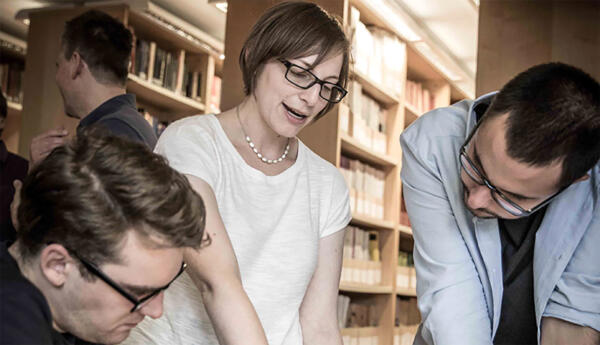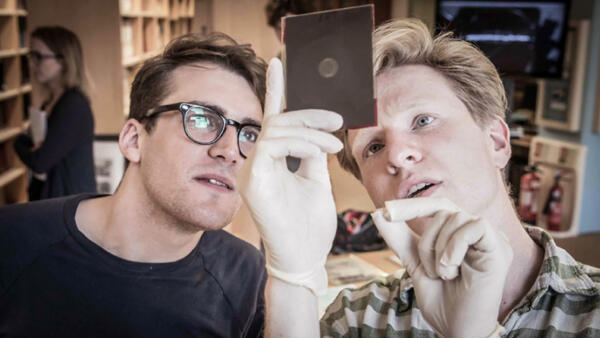Photograph 51 | Rehearsal Diary
Photograph 51– Week One
The Science of Life
Associate Director John Haidar provides a week‑by‑week summary of rehearsals for Photograph 51
On the first day of rehearsals for Photograph 51, the entire company gathers for the ‘Meet and Greet’ in the rehearsal room. This allows everyone involved in the production a chance to get together and begin forging the various collaborations that will develop over the coming weeks and months.
Christopher Oram guides us through the intricacies of the model box for his set design. The play is full of vivid images and we’ll spend as much time discussing these as we will anatomising the truths (and falsehoods) we discover about the characters themselves. In addition, we have adorned one of the rehearsal room walls with a photographic tapestry, encompassing a vast spectrum of references to map the world in which the discovery of the double helix unfolds.

Anna Ziegler tells us that, when she first started working on the play, she was commissioned to interweave the lives of three scientists, however, such was her fascination with Rosalind Franklin’s story, that she decided to write this new play with her as its focus. Though we enter into the race for the structure of DNA via a prism of scientific endeavour, Anna has a forensic sensibility for the all-too human relationships at the heart of the drama. It’s about the loneliness of science – the numbers and figures and measurements and images – for the small band of innovators for whom, as Rosalind’s biographer, Brenda Maddox, writes, ‘these infinitesimal specks of matter were as real and solid as billiard balls’.
Director Michael Grandage outlines his process for rehearsals. It’s exceptionally clear and involves getting the cast on their feet as soon as possible, allowing them to inhabit the play physically as well as intellectually and emotionally. As we move through the week, we ‘sketch’ the entire piece, relying on the actors’ instincts to realise the laboratories of King’s College and Cambridge University. Many of those who were involved emerged from the ruins of wartime – Francis Crick worked for the Admiralty, whilst Maurice Wilkins was part of the Manhattan Project to develop the atomic bombs dropped on Hiroshima and Nagasaki – turning away from the science of death to the science of life.

The week concludes with a visit to the archives of King’s College, London, and the underground laboratories frequented by the biophysicists of the time. We hold the original glass plate of Photograph 51, taken on May 2nd 1952, in our hands and, there, touching from a distance, are Rosalind Franklin, Don Caspar, Francis Crick, Ray Gosling, James Watson and Maurice Wilkins.





